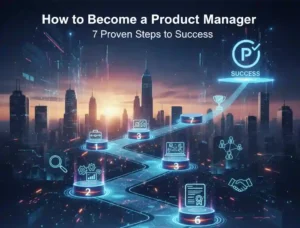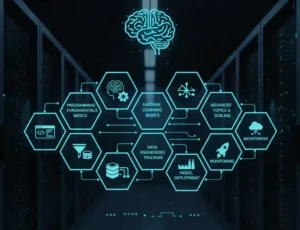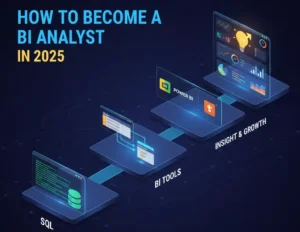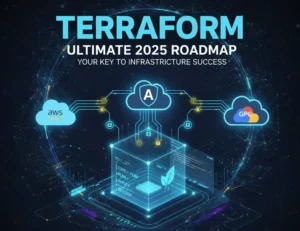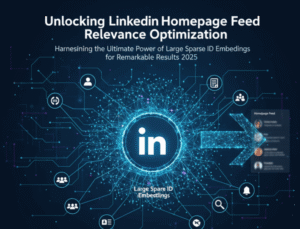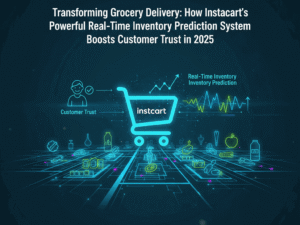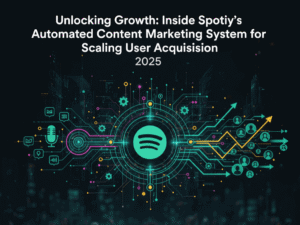Hey there, if you’re eyeing a career where you get to wrangle massive datasets, build pipelines that power big decisions, and earn a solid paycheck, you’ve landed in the right spot. The data engineer roadmap isn’t some mystical path; it’s a straightforward journey anyone with curiosity and grit can tackle. In this guide, we’ll break it down step by step, mixing in real stats, hands-on tips, and examples from the trenches. By the end, you’ll have a clear plan to become a data engineer, no fluff attached.
Think about it: data is everywhere, and companies are desperate for pros who can make it flow smoothly. Whether you’re switching careers or just starting out, following a solid data engineer roadmap can get you there quicker than you think. Let’s dive in.
Table of Contents
What Does a Data Engineer Do Anyway?
Picture this: data scientists and analysts are the ones spotting trends and making predictions, but without data engineers, they’d be staring at a blank screen. Data engineers design, build, and maintain the systems that collect, store, and process data. It’s like being the architect and plumber of the data world all rolled into one.
In a typical day, you might optimize a database query to handle millions of records or set up a real-time stream for customer behavior data. It’s hands-on work that combines coding smarts with problem-solving. And here’s a fun fact, from e-commerce giants to healthcare firms, every industry relies on these setups to stay competitive.
No wonder the role is booming. If you’re plotting your data engineering career path, know that it’s about creating reliable foundations so others can build on top.
Why Jump Into Data Engineering in 2025?
Let’s talk numbers because they don’t lie. The job market for data engineers is heating up, with postings skyrocketing nearly 400% over the past five years according to industry reports. Projections show a 24% growth in demand through 2029, outpacing many tech roles. Why? Businesses are drowning in data from AI, IoT, and cloud expansions, and they need experts to manage it.
Salary-wise, it’s a winner. The average base pay for data engineers in the US hits around $125,000, with total compensation often reaching $150,000 when you factor in bonuses. Seniors can pull in up to $194,000. In high-demand spots like San Francisco or New York, expect even more. Globally, places like the UK and India see averages from $70,000 to $110,000, depending on experience.
But it’s not just about the cash. Data engineering offers stability in a shaky economy, think remote options, flexible hours, and the chance to work on cutting-edge projects. If you’re weighing options, this data engineer roadmap could be your ticket to a future-proof gig.
Key Data Engineer Skills You Need to Master
To thrive, you’ll want a toolkit of data engineer skills that blend tech know-how with soft touches. Don’t worry if it sounds overwhelming; start small and build up.
Here’s a breakdown of the top data engineer skills for 2025:
- Programming Languages: Python and SQL are non-negotiable. Python for scripting and automation, SQL for querying databases. Java or Scala come in handy for big data frameworks.
- Databases and Warehousing: Get comfy with relational ones like PostgreSQL and NoSQL like MongoDB. Tools like Snowflake or BigQuery for cloud warehousing are hot right now.
- Big Data Technologies: Spark for processing large datasets, Kafka for real-time streaming. These are staples in any data engineering career path.
- ETL Processes: Extract, Transform, Load—learn tools like Apache Airflow or Talend to automate data flows.
- Cloud Platforms: AWS, Azure, or Google Cloud. Focus on services like S3 for storage or EMR for managed Hadoop.
- Soft Skills: Communication to explain tech to non-tech folks, problem-solving for debugging pipelines, and collaboration for team projects.
Stats back this up: 86% of job listings emphasize cloud skills, and real-time processing tools like Kafka appear in over half. Hone these, and you’ll stand out in interviews.
Your 10-Step Data Engineer Roadmap
Ready for the meat of it? This data engineer roadmap lays out actionable steps to go from newbie to pro. Aim for 6-12 months if you’re dedicated, longer if part-time. Each step includes tips and resources to keep you moving.
Step 1: Build a Strong Foundation in Basics
Start with the fundamentals. Learn programming basics if you’re rusty. Focus on Python, it’s versatile and beginner-friendly. Spend a month on free courses covering variables, loops, and functions.
Tip: Practice daily on platforms like LeetCode. Why? Real jobs involve writing efficient code under pressure.
Step 2: Master SQL and Databases
SQL is the backbone of data engineering skills. Learn joins, aggregates, and optimization. Then dive into databases: set up a local PostgreSQL instance and experiment.
Example: Query a sample e-commerce dataset to find top-selling products. This mirrors real tasks at companies like Amazon.
Step 3: Explore Data Modeling and Architecture
Understand how data is structured. Study star and snowflake schemas for warehousing. Tools like ERD diagrams help visualize.
Actionable tip: Design a model for a fictional app, like a ride-sharing service. It’ll sharpen your thinking for complex systems.
Step 4: Learn ETL and Data Pipelines
ETL is where the magic happens. Use Python libraries like Pandas for small-scale, then scale to Airflow for orchestration.
Case study: At Netflix, data engineers use ETL to process viewing data, enabling personalized recommendations. Mimic this by building a pipeline that transforms raw logs into reports.
Step 5: Dive Into Big Data Tools
Time for data engineer tools like Hadoop, Spark, and Kafka. Start with Spark for batch processing, it’s in demand for handling petabytes of data.
Stat: Over 58% of firms adopt these for automation. Tip: Set up a local cluster and process a public dataset, like weather records.
Step 6: Get Hands-On with Cloud Computing
Cloud is king in 2025. Pick one platform, say AWS, and learn storage (S3), compute (EC2), and data services (Glue).
Real-world example: Spotify uses AWS for streaming data pipelines, scaling to millions of users. Build a similar mini-project to ingest song plays.
Step 7: Focus on Data Governance and Security
Learn about compliance like GDPR and tools for encryption. It’s crucial as breaches cost companies millions.
Tip: Implement access controls in a database project. Employers love candidates who think about security early.
Step 8: Build Real Projects for Your Portfolio
Theory alone won’t cut it. Create 3-5 projects: a real-time dashboard, a data warehouse, or an IoT pipeline simulator.
Example: For healthcare, integrate patient data from multiple sources, similar to how Kaiser Permanente optimizes records for better care.
Step 9: Earn Certifications to Boost Credibility
Certifications validate your data engineer roadmap progress. Go for Google Data Analytics, AWS Certified Data Engineer, or Databricks Spark.
Fact: Certified pros earn 15-20% more on average. Study 2-3 months per cert.
Step 10: Network, Apply, and Iterate
Join communities on LinkedIn or Reddit. Tailor resumes to highlight projects and skills. Prepare for interviews with system design questions.
Tip: Start with junior roles or internships. Many land jobs within 3 months of active searching.
Follow this data engineer roadmap, and you’ll be equipped to handle real challenges.
Actionable Tips to Speed Up Your Data Engineering Career Path
Want to fast-track? Here are proven tips:
- Daily Practice: Code for 1-2 hours. Consistency beats cramming.
- Mentorship: Find a mentor on platforms like MentorCruise. Their insights can shave months off your learning.
- Open-Source Contributions: Fix bugs in tools like Airflow. It builds cred and networks.
- Stay Updated: Follow blogs and podcasts. AI integration is trending—learn how it affects pipelines.
- Portfolio Power: Host projects on GitHub. Include READMEs explaining your choices.
- Soft Skill Polish: Practice explaining concepts simply. It helps in interviews.
Remember, to become a data engineer, persistence is key. Many pros started with zero experience.
Common Challenges and How to Overcome Them
Every data engineer’s roadmap has bumps. Overwhelmed by tools? Prioritize based on job postings, SQL, and Python first.
Debugging pipelines can be frustrating. Tip: Use logging extensively and test small.
Burnout? Set boundaries and celebrate wins, like completing a project.
Is the job market competitive? Tailor applications and leverage LinkedIn, 80% of hires come from networks.
The Future of Data Engineering: Trends to Watch
Looking ahead, AI-driven automation will reshape roles. Data engineers will focus more on governance as regulations tighten.
Edge computing for IoT will demand faster pipelines. Stat: 86% of firms invest in AI processing, creating niches.
Stay adaptable in your data engineering career path, and you’ll thrive.
FAQs
How long does it take to complete a data engineer roadmap and land a job?
It varies, but with full-time effort, 6-12 months is realistic. Factor in prior coding experience, and beginners might need longer. Many secure entry-level roles after building 3-5 projects and networking aggressively.
What are the best certifications to include in my data engineer roadmap?
Top picks for 2025: AWS Certified Data Engineer Associate, Google Cloud Professional Data Engineer, and Microsoft Certified: Azure Data Engineer. These boost resumes and teach practical data engineer skills. Aim for one every few months.
What's the difference between a data engineer roadmap and a data scientist path?
Data engineers focus on building infrastructure like pipelines and databases, while scientists analyze data for insights. Engineers need stronger coding and system design; scientists emphasize stats and ML. Both overlap in tools like Python.
Can I become a data engineer without a computer science degree?
Absolutely, many do. Focus on self-taught data engineer skills via online courses, projects, and certifications. Employers value portfolios over degrees. Start with free resources and build real-world examples to prove your chops.
There you have it, a complete data engineer roadmap to guide your journey. Start today, stay consistent, and watch your career take off. You’ve got this!








